 Most viewed Most viewed |
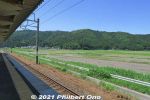
Scenery from JR Yogo Station's northern side.22 views
|
|
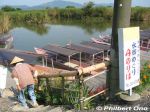
It's called "Suigo Meguri" (waterway cruise). Following the boat driver/captain.22 views
|
|
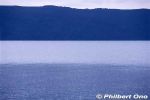
Lake Kussharo, Hokkaido22 views
|
|
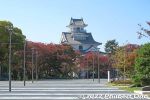
Nagahama Castle in autumn.22 views
|
|
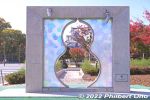
Gourd monument on the roadside of Nagahama Castle.22 views
|
|
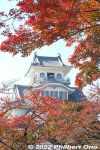
Nagahama Castle in autumn.22 views
|
|
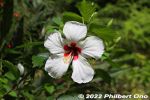
White hibiscus on Amami Oshima.22 views
|
|

Sago palms, Amami Oshima, Kagoshima22 views
|
|
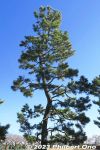
22 views
|
|

Catfish sculpture on a small office building in Soka, Saitama.22 views
|
|
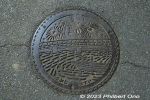
Manhole in Koga, Ibaraki Prefecture showing fireworks and river.22 views
|
|
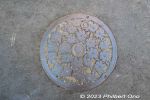
Manhole in Kashiwa, Chiba Prefecture.22 views
|
|

Mishima Pond (Mishima-Ike) and Mt. Ibuki in spring with cherry blossoms. 22 views
|
|
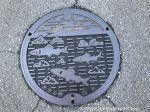
Manhole in Akiruno, Tokyo showing river fish.22 views
|
|
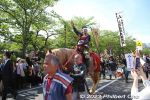
The fourth Odawara Castle lord, Hojo Ujimasa played by well-known actor Takashima Masanobu. 四代氏政 (高嶋政伸)22 views
|
|
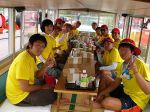
Ground crew in yellow take a break.21 views
|
|
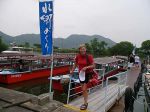
Leaving the Scenic Water Channel boat pier.21 views
|
|

21 views
|
|

21 views
|
|
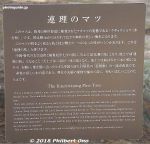
21 views
|
|

Torii21 views
|
|

Atop Hagi Castle's main tenshu tower foundation.21 views
|
|

There's even a bench on Hagi Castle's main tenshu tower foundation.21 views
|
|

21 views
|
|

21 views
|
|

21 views
|
|

21 views
|
|

Maaru bus stop at Hagi Castle.21 views
|
|

Grave of retainer Motofusa Nagai and his loyal cat.21 views
|
|

21 views
|
|

21 views
|
|

Even modern homes have white walls.21 views
|
|

21 views
|
|

An adjacent building is the Kurashi-no-Yakata. くらしのやかた21 views
|
|

Old soda bottles like Fanta.21 views
|
|

Inside Higashi-Hagi Station. Pretty quiet place. Less than 300 people per day get on the train here.21 views
|
|

Hagi's Maaru bus is the main way to tour Hagi. It stops at all the major sights in Hagi. Just hop on and off. It runs twice an hour.21 views
|
|

Hagi Station phone booth.21 views
|
|

21 views
|
|

21 views
|
|
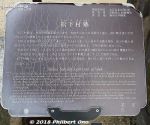
About the the Shoka-sonjuku school.21 views
|
|

Portrait of Yoshida Shoin in Shoka-sonjuku school. He taught at the school for only a year. 松下村塾21 views
|
|

21 views
|
|

Yoshida Shoin was confined here in 1855.21 views
|
|

Inside Shoin Shrine 21 views
|
|

21 views
|
|

Amulet shop21 views
|
|

Exiting the shrine's torii.21 views
|
|

About the Ansei Purge.21 views
|
|

21 views
|
|

21 views
|
|

21 views
|
|

Tea room.21 views
|
|

Tomb of Matsudaira Harusato (Fumai), seventh lord of the Matsudaira clan.21 views
|
|

21 views
|
|

21 views
|
|

21 views
|
|

21 views
|
|

21 views
|
|

21 views
|
|

21 views
|
|

21 views
|
|

21 views
|
|

21 views
|
|

21 views
|
|

21 views
|
|

21 views
|
|

Signs in English.21 views
|
|

Dairenji Temple main hall in Kurayoshi, Tottori. 大蓮寺21 views
|
|

Hawai Onsen bus stop has this foot bath.21 views
|
|

Lake Togo on an overcast, winter day.21 views
|
|

Walking path around Lake Togo.21 views
|
|

This lakefront space is used for the Hawaiian festival held in July.21 views
|
|
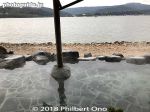
Men's outdoor bath at Sennentei. (Segregated) Hawai Onsen, Tottori. 千年亭21 views
|
|

Adachi Museum of Art garden waterfall, Shimane Prefecture.21 views
|
|

Natural scroll next to a Buddhist altar.21 views
|
|

Sculpture at Adachi Museum of Art garden, Shimane Prefecture.21 views
|
|

JR Yasugi Station welcomes visitors to the land of Yasugi-bushi.21 views
|
|

Yasugi-bushi Engeikan Hall is a Japanese-style theater where they perform Yasugi-bushi, a local folk song and dance. 21 views
|
|

21 views
|
|

Comfortable chairs.21 views
|
|

21 views
|
|

21 views
|
|

21 views
|
|

21 views
|
|

21 views
|
|

"Dojo-sukui" (Loach Scooping) also danced by women.21 views
|
|

21 views
|
|

Afterward, they invited members of the audience on stage to try the loach scooping dance.21 views
|
|

Display hall for Yasugi-bushi.21 views
|
|

About Yasugi-bushi.21 views
|
|

Next to the theater is this restaurant.21 views
|
|

Took the free shuttle bus from Adachi Museum of Art to go back to JR Yasugi Station on the San'in Line.21 views
|
|

My train home at JR Yasugi Station. San'in Line.21 views
|
|

21 views
|
|

21 views
|
|

This statue shows a famous scene from the "Misasa Kouta" silent movie that was made for the song in 1929.21 views
|
|

Song monument for Misasa Kouta folk song composed in 1927. Inscribed with the song's first two lines. 三朝小唄 歌碑21 viewsThe monument is near the river.
|
|

21 views
|
|

In early May for Children's Day, Tokyo Tower was festooned with colorful koinobori carp streamers.21 views
|
|

21 views
|
|

21 views
|
|

21 views
|
|

21 views
|
|

21 views
|
|

21 views
|
|

21 views
|
|

21 views
|
|

21 views
|
|

21 views
|
|

Near the elevators on the 1st floor is this exhibition space.21 views
|
|

Tokyo Tower lit up as seen from Shiba Park at night.21 views
|
|

21 views
|
|
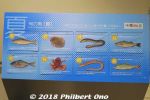
Also in the corridor, bilingual explanatory panels for identifying fish.21 views
|
|

The path to the shrine is quite narrow. It took a while to get to the shrine as we inched along.21 views
|
|

If you've never been to this shrine, it's impossible to tell how far or how near you are. The path makes a few turns.21 views
|
|

Wash basin, but hardly anyone used it. People didn't want to lose their place in line.21 views
|
|

21 views
|
|

21 views
|
|

NHK TV broadcasts the marathon live nationwide.21 views
|
|

Leg cramps perhaps...21 views
|
|

21 views
|
|
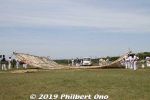
21 views
|
|
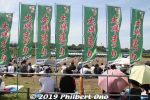
21 views
|
|
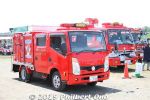
21 views
|
|
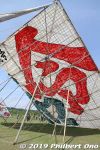
21 views
|
|
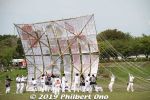
21 views
|
|
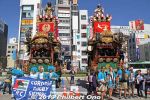
Two Kumagaya Uchiwa Matsuri floats were parked outside JR Kumagaya Station to delight rugby spectators. Kumagaya Uchiwa Matsuri is held in July with 12 ornate floats with musicians.21 views
|
|
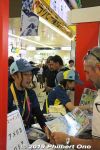
Volunteers at Kumagaya Station give local information to foreign visitors.21 views
|
|
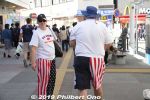
USA rugby fans.21 views
|
|
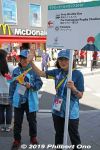
Volunteers show the way to the shuttle buses and fan zone.21 views
|
|
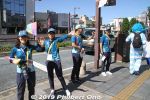
Volunteers show the way to the shuttle buses and fan zone.21 views
|
|
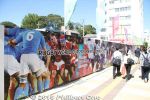
Walking toward the shuttle bus stop near the fan zone.21 views
|
|
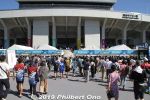
Before entering Kumagaya Rugby Stadium, there was a security check of bags. Couldn't bring in any drinks.21 views
|
|
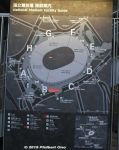
The stadium grounds has four gates (Sendagaya Gate, Gaien Gate, etc.) from the direction of train/subway stations. This map shows how far each train/subway station is.21 viewsThe closest is JR Sendagaya Station (440 meters) and Kokuritsu Kyogijo subway station (130 meters).
The stadium itself has eight main entrances from A to H. These main entrances further branch off into smaller entrances such as A1, A2, etc., leading to different floors and seating blocks.
The stadium seating sections are labeled Main Stand, Back Stand, North Stand, and South Stand. Each stand comprise three inclined tiers of seating. The Main Stand is the prime section. Gate F is nearest to the Japan Olympic Museum where the Olympic rings are.
|
|

Semi-accessible toilet. (Too small for a wheelchair.) The wheelchair spaces had accessible toilets nearby.21 views
|
|
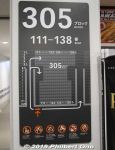
Layout of a block of seats. The block numbers indicate the tier. 100s for the 1st tier (expensive seats), 200s, for the 2nd tie, and 300s here for the 3rd tier (cheap seats, ¥5000 for this event). 21 viewsHere, you should check your seat No.
If your seat No. is 111 to 124, enter on the left side of the block. If it's 125 to 138, go to the other corridor entrance on the right side of the block. The field is toward the top of this diagram (Row 1).
|
|
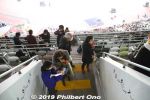
At the end of the corridor is steps going down and up. Cramped spot where people tend to stop and try to figure out which way to go. 21 viewsIf your seat is on the other side of the block, you should go back to the concourse and enter the corridor on the other side of the block.
|
|
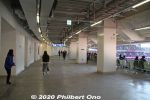
2nd tier concourse (3rd floor) does not have any crosswinds.21 views
|
|
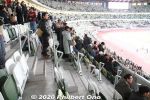
2nd tier seats, less steep than the 3rd tier.21 views
|
|

Wheelchair space on 2nd tier concourse. 21 views
|
|
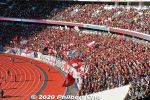
Vissel Kobe fans on the North Stand. Loud cheers. The roof overhead carried their cheers very well.21 views
|
|

Vissel Kobe fans on the North Stand. 21 views
|
|
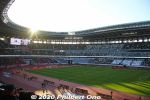
Lots of afternoon sun on this part of the Back Stand.21 views
|
|
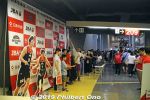
Hallway after showing your ticket. Long line to pose with player cutouts.21 views
|
|

Yuta Watanabe, one of the star players and an NBA player for the Memphis Grizzlies.21 views
|
|
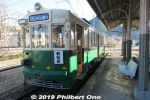
21 views
|
|
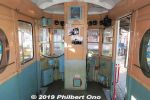
Driver's cab in モ512.21 views
|
|
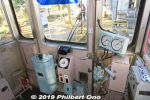
Driver's seat in モ601.21 views
|
|
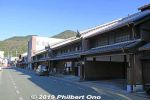
Mino and this townscape was part of the Mino castle town developed by Daimyo Kanamori Nagachika (1524–1608) who lived in nearby Ogurayama Castle. You can park your car somewhere and walk around the area.21 viewsNational Important Traditional Townscape Preservation District.
|
|
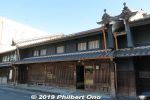
Hirata Family residence 平田家21 views
|
|

Signboards explain in English the most significant homes. This is the Hirata Family residence.21 views
|
|

Inside Hirata Family residence21 views
|
|

About Suzuki Kohei residence.21 views
|
|

About Kosaka Family Residence. 小坂家住宅21 views
|
|

About Former Imai Residence. 旧今井家21 views
|
|
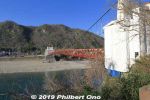
Mino Bridge over Nagara River. Until 1965, vehicles used to cross the bridge. 美濃橋21 views
|
|
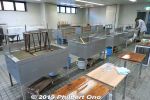
Basement floor has this paper-making workshop where you can try making your own washi paper. It can be a single sheet 33x45cm), 6 postcards, or diploma. Takes less than an hour. Fees are ¥500 to ¥800. ワークショップ - 紙すきの体験21 views
|
|
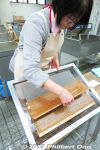
Transferring the paper sheet.21 views
|
|
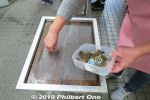
We could also put small leaves on the paper.21 views
|
|

Paper vaccuum dryer sucking water from the wet washi paper moving across the slit underneath. Vey neat.21 views
|
|
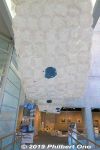
21 views
|
|
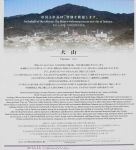
Pyramid-shaped Mt. Oyama is also called "Amefuri-yama" or mountain of abundant rain since it was often shrouded in clouds. Farmers prayed to the mountain for rain. 21 viewsThe mountain's deity, Oyama-tsumi-no-Kami, is the father of the goddess of nearby Mt. Fuji. It is also a Japan Heritage site. A great time to visit would be in mid-November for the autumn leaves.
|
|
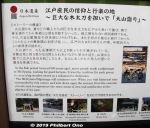
Mt. Oyama once had so many pilgrims that several roads from Tokyo (Edo) and surrounding areas leading to Oyama were dubbed "Oyama-do Road" (大山道).21 viewsThe road named Aoyama-dori Oyama Road started from Akasaka and passed through Sangenjaya (Three Teahouses). Sangenjaya originally had only two teahouses serving pilgrims going to Oyama. A third teahouse was added to serve the many Oyama pilgrims and that's how Sangenjaya got its name.
|
|
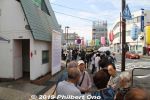
From Isehara Station's North Exit, there was this long line for the bus stop 4. Some people were going on a different bus, but we all got on the right bus.21 views
|
|
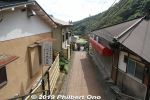
Looking back down the path.21 views
|
|

21 views
|
|
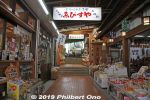
Souvenir shops.21 views
|
|

At the Oyama Cable Station, we took the cable car halfway up the mountain to Afuri Jinja Station. It's 280 meters long up the slope and runs every 20 min. from 9 am to 5 pm on weekends or until 4:30 pm on weekdays. It's also possible to hike up.21 views
|
|

There's only one station in-between where the trains going in opposite directions pass each other. This is Oyama-dera Station if you want to visit Oyama-dera Temple.21 views
|
|
|
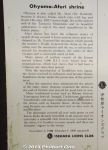
About Afuri Shrine.21 views
|
|
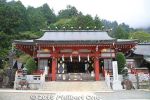
Oyama Afuri Shrine (大山阿夫利神社) Haiden prayer hall. The shrine was built to bring rain for agriculture. One of the gods enshrined is the father of Mt. Fuji's goddess. 21 views拝殿
|
|
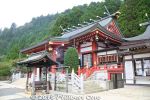
Haiden prayer hall. On the right of the Haiden, you can see the entrance to the basement where there is natural spring. 拝殿21 views
|
|
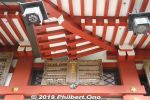
21 views
|
|
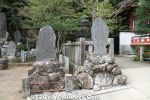
Lots of monuments at Oyama Afuri Shrine.21 views
|
|
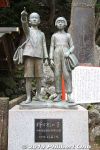
Children's monument from the city of Kawasaki.21 views
|
|
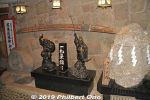
Religious sculptures, monuments, and a wooden sword offering displayed in the shrine's Haiden basement passage. 一礼来福21 views
|
|
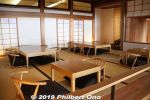
Afuri Shrine's cafe named Sekison, the indoor dining room. Open 9:30 am–4 pm. 石尊21 views
|
|
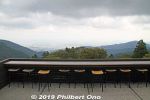
Afuri Shrine's Sekison cafe also has this outdoor counter with a view. On clear days, Enoshima and the ocean can be seen. 石尊21 views
|
|

Passing loop at Oyama-dera Station.21 views
|
|
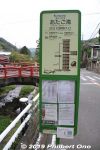
Atagodaki bus stop for the bus bound for Isehara Station.21 views
|
|
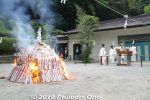
21 views
|
|

For Oyama Afuri Shrine's 39th Fire Festival Takigi Noh on Oct. 3, 2019, a Kyogen play called "Neongyoku" and Noh play called "Momojigari" were performed.21 viewsPerformers were top class from the Kanze School of Noh and the Okura School of Kyogen. Sorry, but photography of the performances wasn't allowed so I don't have photos of the performances. Many thanks to Alice Gordenker who organized the tour and provided English explanations.
|
|

Saiku government officials. 斎宮十二司官人21 views
|
|

Myobu (命婦) getting off the Seiden.21 views
|
|

High-ranking court ladies called Uneme (釆女) chosen from an aristocratic family. They were in charge of food and drink for the princess. They give an iris flower offering.21 views
|
|

Top-ranking court ladies called the Naishi (内侍) working at the Saiku Palace.21 views
|
|

Top-ranking court ladies called the Naishi (内侍) working at the Saiku Palace.21 views
|
|

Ladies wearing a red band across their shoulders are court ladies called Nyoju (女嬬) who serve in the inner palace (後宮) and take care of the Saio princess' daily living.21 views
|
|

Saio Matsuri banners were put up by local jr. high students.21 views
|
|

Patch of trees are the Saio Woods where the Saiku Palace was supposedly located. 斎王の森21 views
|
|

Torii in Saio Woods. 斎王の森21 views
|
|

Stone monument in the Saio Woods indicating the location of the Saiku Palace. "Site of the Saio Palace" erected in On Nov. 3, 1968.21 views斎王の森
|
|

The Saio princess procession (斎王群行) had about 120 people dressed in Heian Period (794–1185) costumes.21 views
|
|

21 views
|
|

High-ranking court ladies called Uneme (釆女) chosen from an aristocratic family. They were in charge of food and drink for the princess.21 views
|
|

In front of the Saio princess palanquin are girls are called Warawame (童女). They are daughters of the Imperial family or nobility and are learning the customs of the Saiku while living in the Saiku Palace. They wear chihaya costume. 千早21 views
|
|

Myobu (命婦), assistants who tend to the immediate needs of the Saio princess.21 views
|
|

Naishi (内侍) coordinator of court ladies in Saiku Palace. She has a fancy umbrella bearer called furyu-gasa. 風流傘21 views
|
|
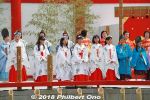
Girls called Warawame (童女) wearing chihaya costume 千早. They are daughters of the Imperial family or nobility and are learning the customs of the Saiku while living in the Saiku Palace. 21 views
|
|

21 views
|
|
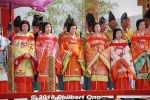
Ladies wearing a red band across their shoulders are court ladies called Nyoju (女嬬) who serve in the inner palace (後宮) and take care of the Saio princess' daily living.21 views
|
|
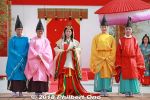
Posing with dancers called Maibito (舞人).21 views
|
|
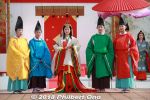
Posing with dancers called Maibito (舞人).21 views
|
|

Saiku government officials. 斎宮十二司官人21 views
|
|

The actual road where the Saio princess traveled to Ise Grand Shrines. Called "Kodai Ise-do" (Ancient Ise Road). 古代伊勢道21 views
|
|

The Nishiwakiden is thought to be an auxiliary to the Seiden and used for rituals and banquets. 西脇殿21 views
|
|

The Higashiwakiden is only partially walled with an earthen floor, used as a waiting room or preparation room during ceremonies. 東脇殿21 views
|
|

About Saiku Heian-no-mori Park. Open 9:30 am to 5 pm (until 4 pm during Nov.–Feb.). The buildings are aso available for rent for private events.21 views
|
|

Ryoko storehouses of the Saikuryo government.21 views
|
|

The Saiku area is a Japan Heritage site and this Ise road has been renovated.21 views
|
|
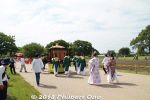
21 views
|
|
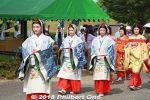
High-ranking court ladies called Uneme (釆女) chosen from an aristocratic family. They were in charge of food and drink for the princess.21 views
|
|
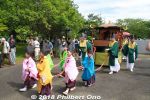
Aristocratic boys wearing a Heian-Period suikan costume. 童男人形「水干」21 views
|
|
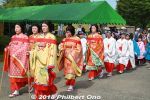
Court ladies called Nyoju (女嬬). 21 views
|
|
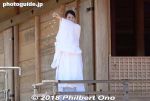
The Departure Ceremony started with a purification ritual called "Kiyone no Gishiki." A woman at two corners of the Seiden sprinkled confetti. 清めの儀式21 views
|
|

Flower offering by court ladies called Nyoju (女嬬) who serve in the inner palace (後宮) and take care of the Saio princess' daily living. 21 views
|
|

Scale model of buildings in this block called the Nai-in which was the living quarters of the Saio princess. Surrounded by a pillared fence. 内院21 views
|
|
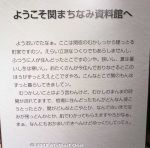
Welcome to Seki Townscape Museum. It explains about the town and why so many buildings have been preserved.21 views
|
|

Jizo-in Temple, Main Hall is an Important Cultural Property. 地蔵院21 views
|
|

Kaiunro, former geisha house in Seki-juku. 開雲楼21 views
|
|

Kameyama Castle's Tamon-yagura turret.21 views
|
|

Kameyama Castle's Tamon-yagura turret. 多聞櫓21 views
|
|

Kameyama Castle's Tamon-yagura turret. 多聞櫓21 views
|
|

Kameyama Castle's Tamon-yagura turret. 多聞櫓21 views
|
|

21 views
|
|

Steps to Kameyama Castle's Tamon-yagura turret.21 views
|
|

21 views
|
|

View from Tamon-yagura turret.21 views
|
|
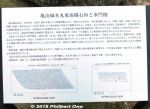
Stone wall design under Tamon-yagura turret. 21 views
|
|

Kameyama Castle well.21 views
|
|

Emperor Meiji once stayed in this home that was moved here.21 views
|
|

21 views
|
|

21 views
|
|

Way to Kameyama Castle's three-story turret site. 三重櫓跡21 views
|
|

Ninomaru fringe.21 views
|
|
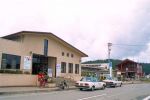
Anamizu Station, a terminal station on the Nanao Line. One of the rail gateways to the Noto Peninsula. 穴水駅21 views
|
|

Bora-machi yagura. This fishing method died out in the mid-1990s, but you might still see the tower built for tourists. (ボラ待ちやぐら)21 views写真提供:©石川県観光連盟
|
|
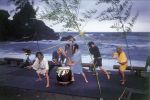
The taiko drummers wear fearsome masks while drumming. Gojinjo daiko commemorate the day when villagers in Nabunemachi in Wajima, Ishikawa Prefecture used crude and frightening masks made of tree bark and seaweed dangling from their heads.21 views写真提供:©石川県観光連盟
|
|

Rebun's east coast near Kafuka Port.21 views
|
|

Kafuka Port 香深港21 views
|
|

Rebun has lots of rolling hills. This was in autumn, offpeak season with no flowers.21 views
|
|

21 views
|
|

Fisherman with an underwater looking glass.21 views
|
|

Cape Sukoton スコトン岬. Island in the distance is Todo island.21 views
|
|

21 views
|
|

21 views
|
|

Very scenic island.21 views
|
|

21 views
|
|

21 views
|
|

21 views
|
|
| 71052 files on 282 page(s) |
 |
 |
251 |  |
 |
|